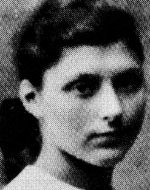Lazensky, Zina-Shoshana (Roizela)
Daughter of Rachel and Isaac. She was born in 1919 in the city of Plonsk, Poland. Shoshana attended a Polish elementary school in the city and even completed two years of study at a Polish high school. At the same time, she had Zionist consciousness as a member of Hashomer Hatzair and aspired to immigrate to Palestine. In this she joined her older sister, who aspired to immigrate as part of the Hanoar Hazioni Movement. In 1935, the parents decided to realize these aspirations. They sold their possessions and immigrated to Eretz Israel with their seven children. At first the family tried to establish their residence in Tel Aviv, but due to difficulties in obtaining an apartment, the family moved to Kfar Saba, which was then a developing colony thirsty for immigration and for young people. At the outbreak of the bloody riots of 1936-1939, rioters began harassing isolated Jewish farms found among Arab villages. The Arab workers ceased to come to work and the Yishuv institutions encouraged the volunteering of young men and women to work in these farms. The “treasury” farm that was located in the village of Qalqilya was one of these interfaces and the young men of Kfar Saba and its young women went to work there to preserve it. Among those leaving was Shoshana. She gave her wages to her parents and thus helped support the family. Shoshana was able to work in the farm for only two weeks, when she returned with her friends from work in Kfar Sava, the car was attacked by Arab rioters. Three of the passengers were killed and Shoshana was taken to Hadassah Hospital in Tel Aviv and after two days of agony, on 5 Elul, 23.8.1938, she died of her wounds and was brought to the eternal rest of the cemetery In Kfar Saba. She left parents, three brothers and three sisters. Lists in memory of her fallen comrades were published in the periodicals. She was also immortalized in the book “The 1936 Riots”, in the book “Zion for the fallen of Kfar Saba and the surrounding area”, in “The Book of the Płońsk Jews” and “The Book of the Sons”.
